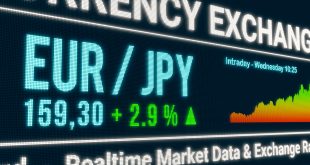The dollar started the week strongly, as it moved in a peak direction against the euro on Monday, March 29th, at a time when a tendency of caution in the market pushes investors to safe havens, and the rapid distribution of vaccines adds to the attractiveness of the currency.
The euro fell 0.1% in Asian trading to $1.1783, not much higher than the four and a half-month low it reached last week at $1.1762 and well below its 200-day moving average at around 1.1866.
The single European currency is heading to record its worst monthly performance since mid-2019, as Europe slows down the pace of vaccination campaigns at a time of a wave of new infections, which is a negative indicator, as data show that investors are still making big purchases of the euro.
The caution caused by the virus also supported the dollar, to rise against the Australian and New Zealand dollars and the British pound, and to rise against the currencies linked to oil, as the re-float of the ship blocking the Suez Canal pushed oil prices down.
The safe-haven Japanese yen was the only currency that bucked the trend, rising from a 10-month low it hit on Friday, rising around 0.2% to 109.43.
Over the first quarter of the year, the dollar recorded a loss of 0.7% against the pound, which was supported by the rapid distribution of the vaccine in Britain, and recorded an increase of 0.8% against the Australian dollar and a rise of 2.9% against the New Zealand dollar, which was affected by reforms in the housing market.
The Australian dollar was in the latest trading, down 0.3% to $0.7621 today, and the New Zealand dollar was down 0.3% to $0.6978, while the sterling fell 0.2% to $1.3767.
 Noor Trends News, Technical Analysis, Educational Tools and Recommendations
Noor Trends News, Technical Analysis, Educational Tools and Recommendations





